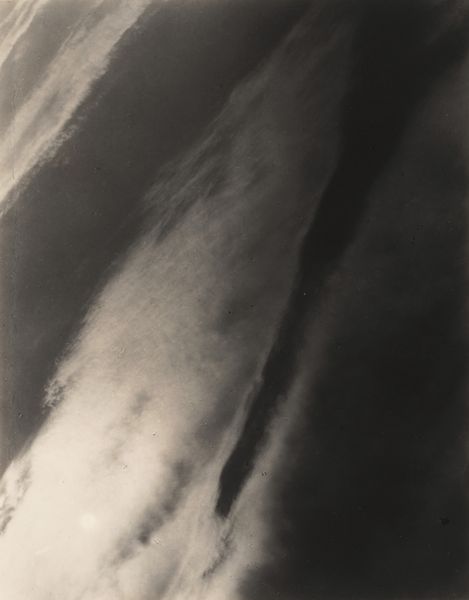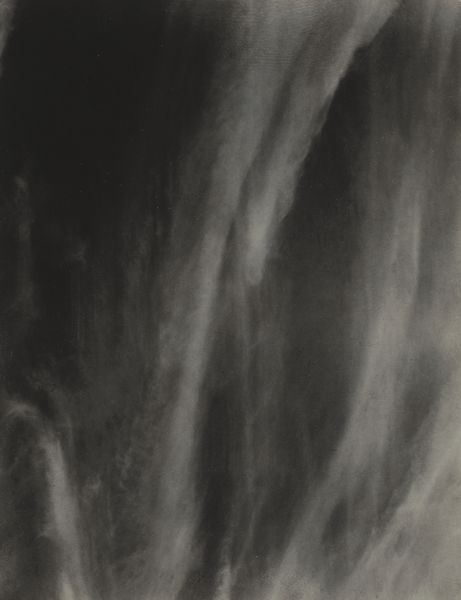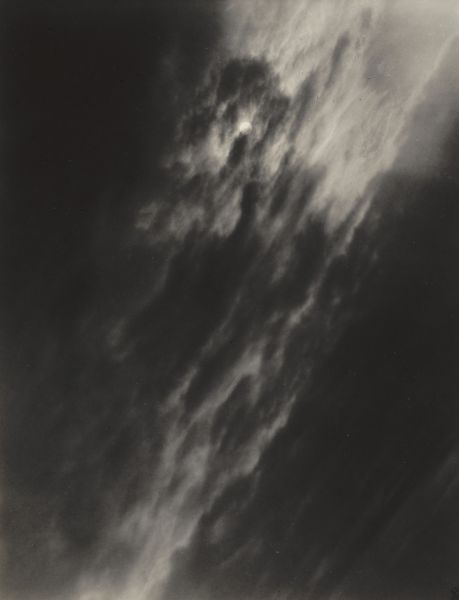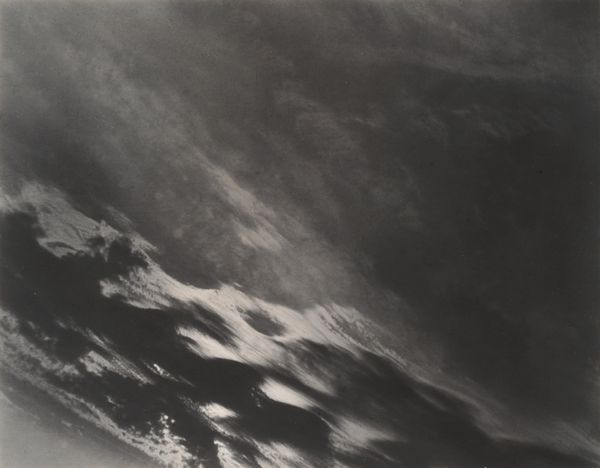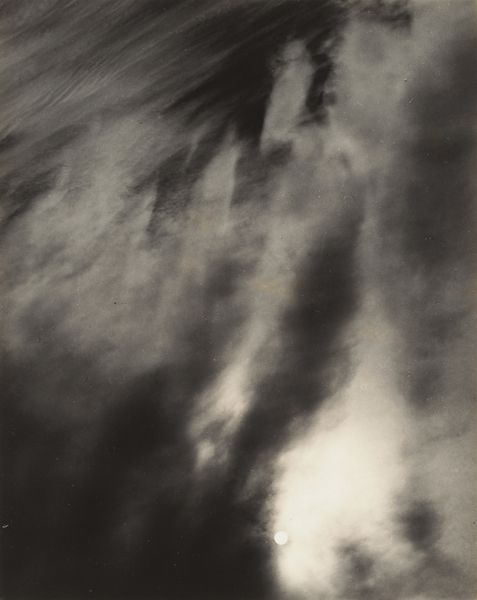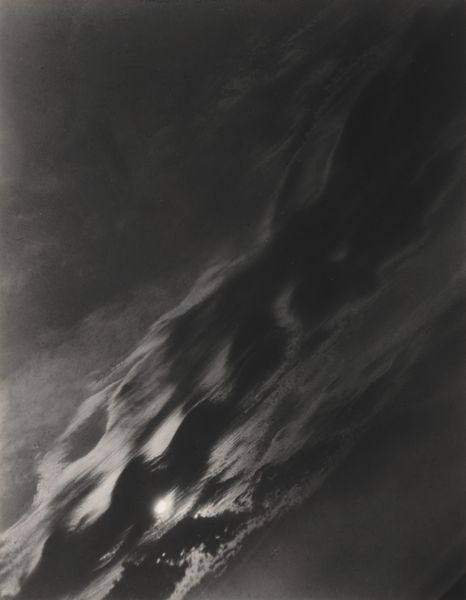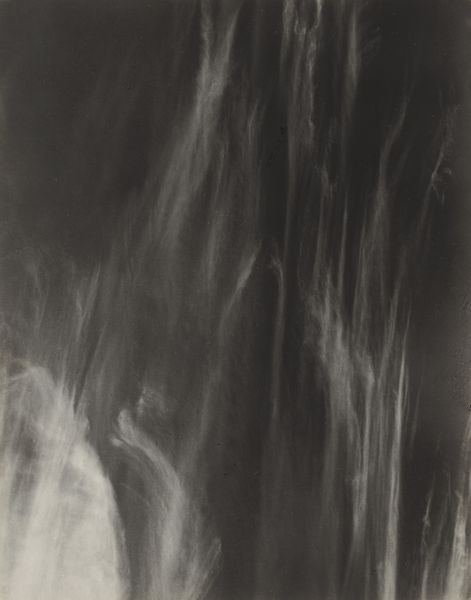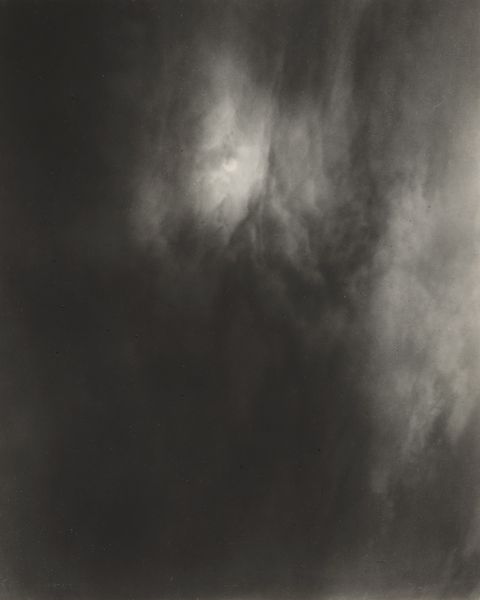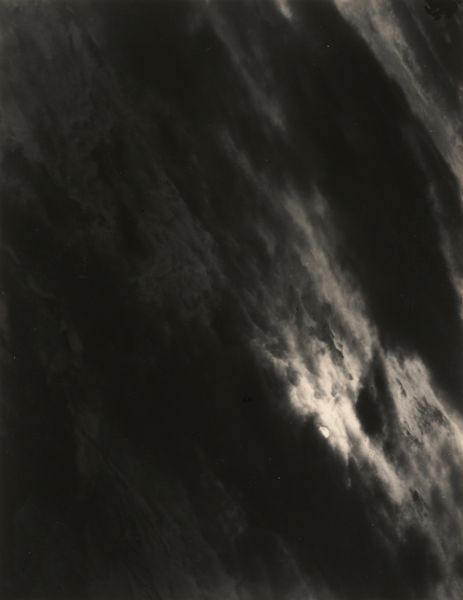
Dimensions: sheet (trimmed to image): 11.7 x 9.2 cm (4 5/8 x 3 5/8 in.) mount: 34.8 x 27.7 cm (13 11/16 x 10 7/8 in.)
Copyright: National Gallery of Art: CC0 1.0
Curator: So much drama, yet so little apparent subject matter! That was my first thought on encountering this moody black-and-white photograph. Editor: Alfred Stieglitz titled it "Equivalent." It was shot in 1931, and, if you look closely, you can make out clouds in a sky. Curator: Clouds as emotional equivalents. It’s very him, isn't it? He believed he could evoke internal states through external imagery. It speaks to the deeply symbolic and totemic power clouds hold cross-culturally – representing transformation, ephemerality, and the sublime. It feels deeply connected to earlier symbolist paintings, a sort of bridge between those spiritual landscapes and the modernist abstract impulse. Editor: It also feels rather melancholic. Those dark, looming shapes swallowing the light…there's a stark simplicity at play that amplifies its emotional punch. Almost brutally simple in some ways. And beautiful in the same measure. Curator: It's less about the meteorological event and more about what the cloud signifies: a state of mind. A reflection on mortality, perhaps? Remember that 1931 fell squarely within the Depression. This wasn’t a carefree time. Stieglitz stripped down to the bare essentials, focusing on pure form to express…what? Angst? Transcendence? It’s intentionally ambiguous, I think. Editor: The framing, that tension between the soft, diffused light and the encroaching darkness. There's a primal feeling of being on the cusp of something unknown…of facing our own insignificance. Yet that little burst of light! Maybe he didn’t think we are insignificant after all! I'm probably reading far too much into some innocent cloud shots. Curator: Well, perhaps it just reveals how profoundly simple symbols can carry multiple layers of emotional weight! But regardless of emotional tone or social relevance, "Equivalent" offers a striking case study in the human urge to project our interior worlds onto nature. Editor: Exactly! I see so much pain in that darkness... Curator: As well you might. As an object for reflection. I find I do, too.
Comments
No comments
Be the first to comment and join the conversation on the ultimate creative platform.

